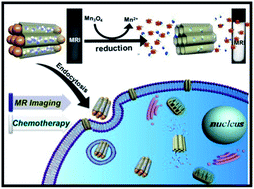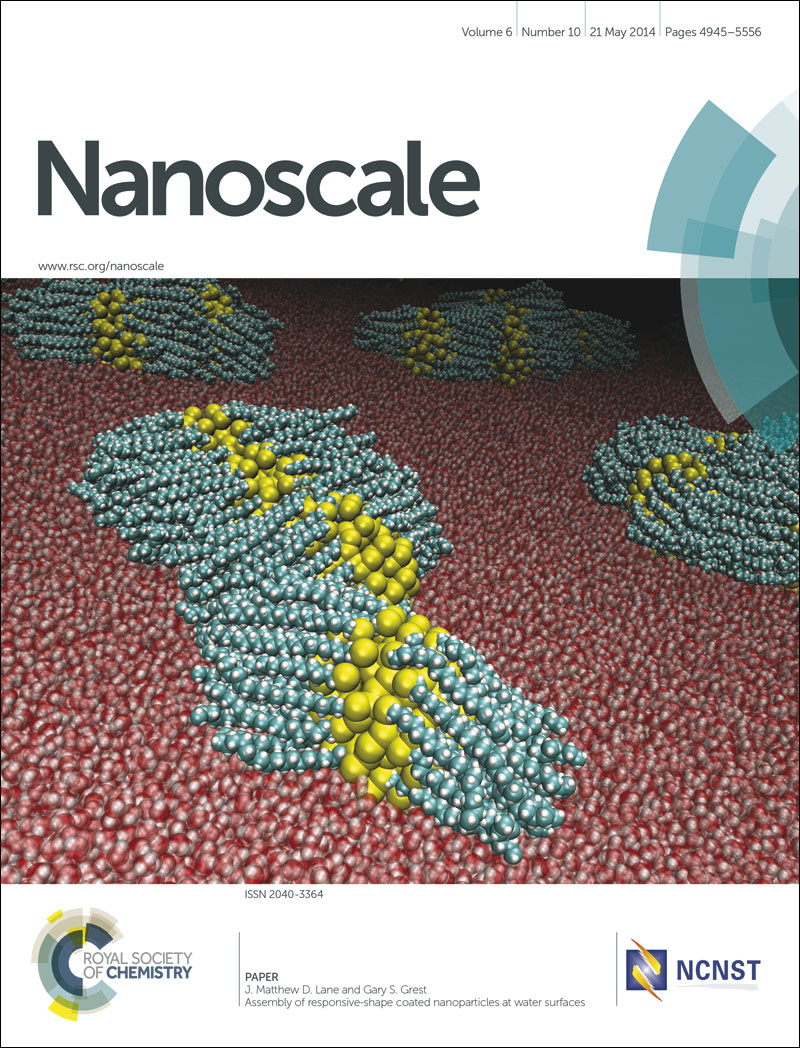Redox-mediated dissolution of paramagnetic nanolids to achieve a smart theranostic system†
Abstract
Manganese oxide (Mn3O4) nanoparticles have recently emerged as a promising T1 contrast agent. In this study, for the first time, we demonstrated an interaction of Mn3O4 with a biological system, and found redox sensitive behavior of these paramagnetic nanoparticles in intracellular reducing environment. Inspired by these findings, we for the first time used this interaction for some therapeutic advantages and designed a versatile mesoporous silica based nanotheranostic system to realize redox-activated enhanced magnetic resonance imaging and responsive anticancer drug delivery. Contrary to previous reports, we firstly prepared high quality amine terminated hydrophilic Mn3O4 nanolids, without using multistep ligand exchange strategies. The resulting water stable and small-sized Mn3O4 nanolids were subsequently used as nanolids to cap drug loaded nanochannels of a porous carrier. Exposure to highly prevalent intracellular reducing environment resulted in the steady-state dissolution of these nanolids and attained an intelligent drug release. Furthermore, the redox receptive dissolution of paramagnetic Mn3O4 nanolids into Mn2+ in turn increases the T1 signal to twofold, providing an added opportunity to even track the feedback of therapy. This study, in addition to simultaneously realizing drug delivery and imaging, also provides a new insight into the fate and interaction of manganese oxide nanoparticles with components of biological systems.


 Please wait while we load your content...
Please wait while we load your content...